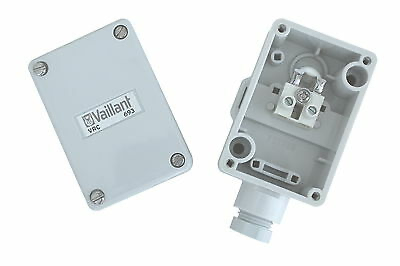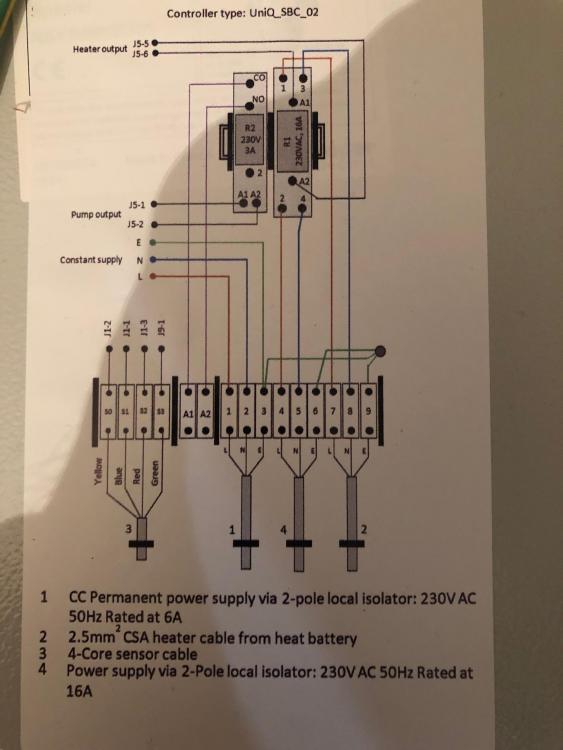Search the Community
Showing results for tags 'wiring'.
-
We've a lot of blockwork walls which are to be wet plastered. This means we'll have lots of cables chased into the blockwork and then plastered over. As I understand it, there are two main reasons to using capping: Protection: to protect the wires from the plaster's trowel, won't protect against screws or nails Rewiring: you have a chance of pulling/pushing wires through and so don't need to disturb the plaster if rewiring. The alternative is to just chase and clip the wires to get plastered over. Chasing limits 1/3 width of blocks if vertical, 1/6 if horizontal. So for 100mm blocks that's 32mm and 16mm respectively. I'm inclined to use the oval conduit pictured below chased into the blockwork. The main benefit is the rewiring one as I see it, because chased wires should be protected enough against the plasterer. I'm doing the wiring myself so can take the time to include the conduit. I'd like it in 3m lengths (2.7m ceilings, 2m works well for 2.4m ceilings), but Screwfix don't carry that, though this page says it is made. The datasheet says it's 1 cm deep, but drawings of other brands suggest 11mm external, 9mm internal. I have read wires outside conduit dissipate heat better which makes sense. What did others do and how realistic is to to rewire through these? Falcon is another option and this supplier looks well priced: https://www.superlecdirect.com/p-oval20-falcon-20mm-pvc-oval-conduit/ TLC unbranded and expensive: Dimensions: External: 22.5mm x 11mm Internal: 20.0mm x 9.17mm : https://www.tlc-direct.co.uk/Products/MTOV20.html Dimensions: External: 29mm x 11mm Internal: 25.0mm x 9.90mm : https://www.tlc-direct.co.uk/Products/MTOV25.html
-
Next I will be putting on the external cladding of my timber frame (Cedral Lap planks). Beforehand I am looking at all the penetrations through the exterior wall. One penetration is the wire for the ASHP controller's weather-compensation sensor (see image below of the sensor). The manual says "Connection wire is 2 x 0.75 mm²".Google says this is "2192Y" wire, which seems to be a common type cheaply available from Screwfix, etc. Should I … just buy a roll of that wire? install it through the wall with a loop outside and a longer loop inside? Should I use a cover plate (see below in orange)? Or instead just slope the penetration downwards and back fill with silicon? This is my first bit of "wiring" so would appreciate any advice and suggestions.
-
I am planning a rewiring and re plastering of a house so I have the opportunity to rethink and plan whole wiring circuits with future home automation possibilities (not much time to design and install a home automation system right now). So I have few options: The domestic traditional wiring system for a house which separate circuit for each area connected to the consumer unit. In this option there are several sockets or lights in one circuit. There is an alternative more expensive to install, commercial model wiring system which circuits run almost for each sockets or lights individually from a distribution board, so you have a centralised control panel of the all power outlets and lights as well. This options seems complex but more manageable if you are planning a hard wired home automation systems which I am considering not now but as a future upgrade. What would you suggest for rewiring when considering hard wired home-automation-ready option as well, if I would like to go for a distribution style wiring system by running cables most of the lights, switches and sockets individually (and some extra network, sensor cables as well) then make all necessary connections in the distribution panel ?
- 25 replies
-
- automation
- wiring
-
(and 2 more)
Tagged with:
-
Our planned new summerhouse is to have underfloor heating. We can extend the cabling from the house to the new summerhouse 2 metres away. We may also power lighting and a TV from this source. If we want a display showing how much energy each of these 3 (heating, lighting, TV) is using, where can we buy meters to do this? I've tried the 'contact us' email link on the Friends of the Earth website (and have sent 2 follow-up emails in the fortnight since an automatic reply arrived saying email us again if you don't get a swift reply) but as am yet no wiser on this topic. Fran
-
Somebody recently wrote about MDF skirting and linked to this (or a similar) page. The image shows a skirting run with a wiring channel cut into the back of the board. Great idea, I thought! Then my caution circuit clicked over to 'On' . It's such a neat idea, there must be something wrong with it. Is there?
-
Guys A bit of a post as a "heads up". I was fitting my replacement controllers today (both my Sunamps are being replaced, a story for another day) and nearly forgot to do something pretty fundamentally important. The reason for this post is that I could easily see a busy plumber/sparky/installer completing missing this. Let me explain firstly with some pictures. Here's the controller as supplied by Sunamp: For simplicity I've removed the lid and the earthing fly lead which is screwed to the back panel (you can see the screw just below the contactor bottom right). Then here's the wiring diagram which is on the back of the lid and also printed in the manual: So as per the title the thing we need to be focusing on is earthing. You will note that the diagram shows the earthing connection across the three live blocks and then back (assumably to the case?) BUT and it's a BIG but. Look again at the controller image the earth wiring is NOT there. Nowhere in the manual does it tell you that its your responsibility to make these connections for the earthing. As far as I can see if you were to fail to make these connections the Sunamp unit itself and the controller case would not be earthed.
- 9 replies
-
- sunamp
- controller
-
(and 3 more)
Tagged with:
-
Seems like such a simple question but I could not find a clear answer, I'm about to have a plasterer come in to plaster the kitchen and dinning room, I have chased out my runs for the wiring and have used plastic ducting to protect the cables. My question is once the rooms are plastered how easy is it to find the wiring runs as plastic ducting does not help with detection, is there some kind of tape you can apply to the plastic ducting before plastering a bit like the tape that John Guest provides for pipe detection in walls. Any advice much appreciated :-)
-
Another first fix question from me. You can tell I'm starting to triple check before boards start flying up! Ref UFH manifolds: Only one zone but as we're split level we have two manifolds. Upper one is in the plant room so no drama's there. Lower one is in the under-stairs cupboard. So far to the under-stairs manifold location I've run: 22mm feed and return 1.5mm 4 core for the pump power and control 1mm 2 core for the actuators Is that all I need? The room thermostat is actually on the CBUS network so that's CAT5 and independent to the heating system. The CBUS network will trigger a relay to signal for heat (actual system still not finalised so a bit woolly here!). I'm also wondering if it would be better to site both pumps in the plant room?
- 39 replies
-
- under floor heating
- ufh
-
(and 1 more)
Tagged with:
-
Hit a small problem today that I am struggling to find the answer to; Our Garden Room has walls that extend all the way up to the vaulted ceiling and the ceiling has an axisymmetric pitch so I am wondering where the wiring safe zone is, is it A or B or C or some combination of all three / any two? Any definitive ideas anyone?









